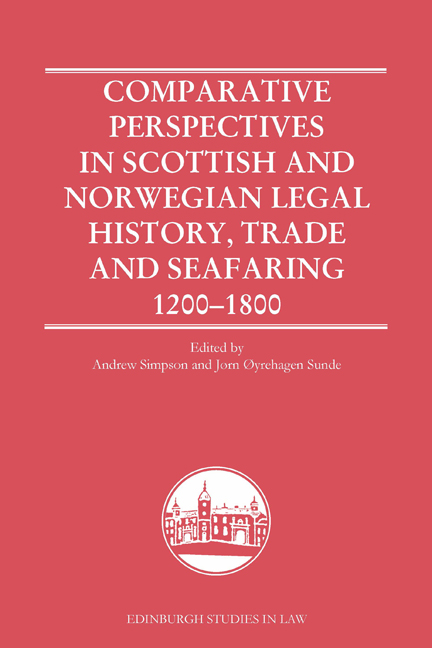Introduction
Published online by Cambridge University Press: 17 November 2023
Summary
A: 1266 AND ALL THAT?
1266 is not as famous a year as 1066 in the history of the British Isles. Nonetheless, it is one useful point of departure for any attempt to compare the legal and political histories of Scotland and Norway. In that year, a long-running conflict between Scotland and Norway came to an end. This culminated in the Treaty of Perth, which was agreed between the representatives of the respective kings of the two countries – Magnus VI of Norway (r. 1263–1280) and Alexander III of Scotland (r. 1249–1286). Both kings shared certain assumptions about what it meant to exercise kingship. Both wanted to articulate the territorial boundaries of their realms – something that the Treaty of Perth helped to achieve. Within their territorial boundaries, they sought to articulate their kingship in similar ways. For example, they both reformed the coinage, in Alexander III's case by establishing a remarkable number of mints across the kingdom during the 1250s, and in Magnus VI's case during the two succeeding decades. In addition, they both cultivated the idea that their realms possessed unitary laws. In the Treaty of Perth, it was provided that the people living in islands ceded by Norway to Scotland would thereafter be governed by the “laws and customs of the kingdom of Scotland and be dealt with and judged according to them from now into the future”. This indicates that Alexander III and his advisers could at least appeal to a unitary law of the realm as an ideal. In Norway, Magnus VI's political efforts after the Treaty of Perth were directed towards unifying the law of the realm, including the law in the Northern Isles and the Faroes, Iceland and Greenland. This reinforced the older idea that the king might issue law for the whole of the realm, and simultaneously created a standard of unified law for the whole kingdom.
Considering these points about Alexander III and Magnus VI together is a helpful way to introduce the present volume, which is concerned with comparative legal history, and specifically comparing the legal histories of Norway and Scotland. The stories of their reigns illustrate that some of the elements essential for any effective comparison are present. Ostensibly, there are similarities in the historical developments of both kingdoms as their rulers sought to forge political and legal identities within their territorial realms.
- Type
- Chapter
- Information
- Comparative Perspectives in Scottish and Norwegian Legal History, Trade and Seafaring, 1200-1800 , pp. 1 - 32Publisher: Edinburgh University PressPrint publication year: 2023



